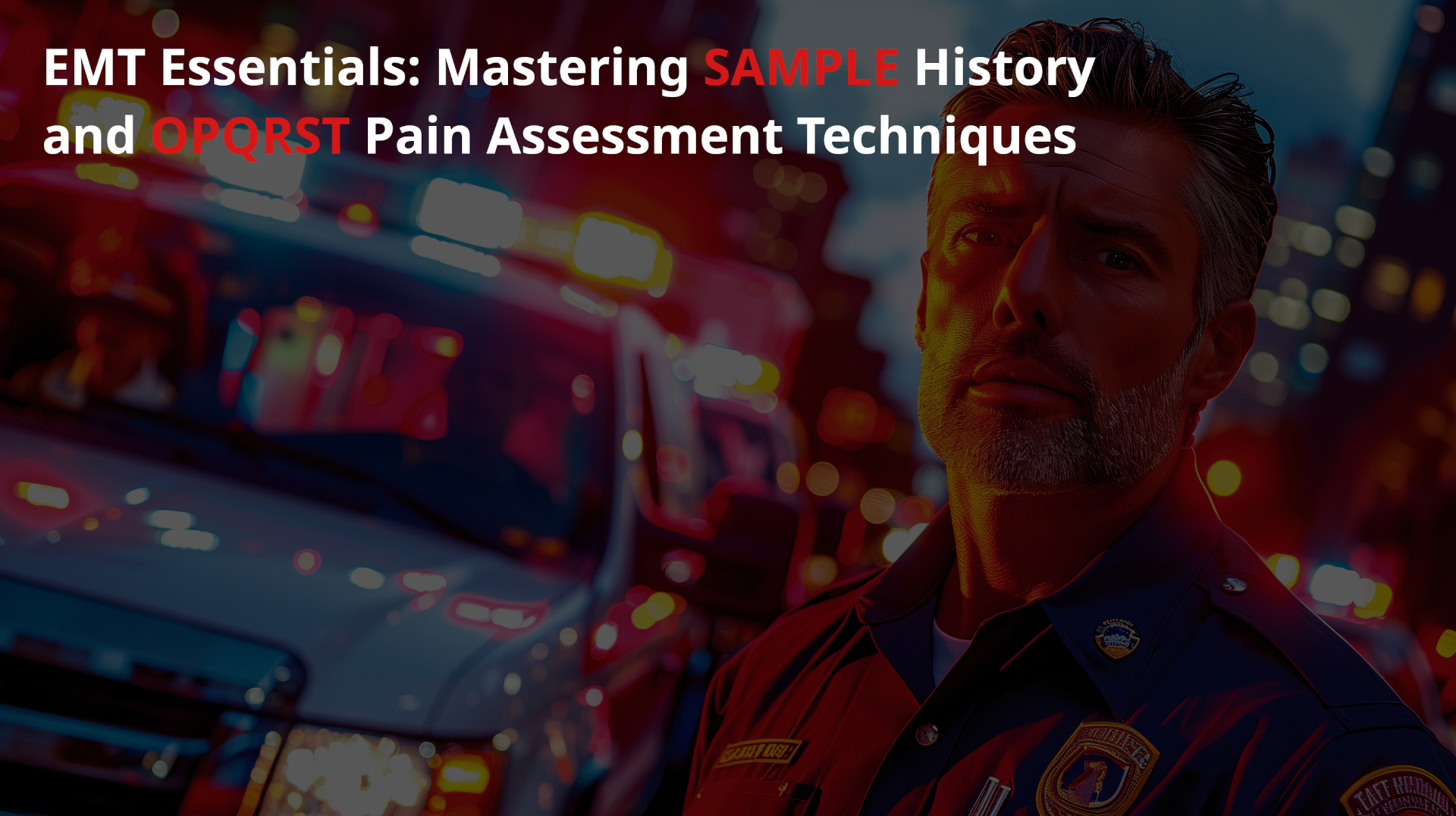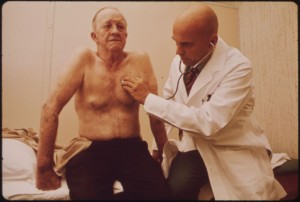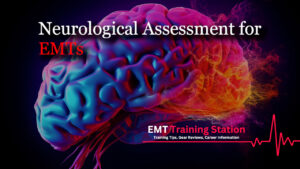In the fast-paced and critical world of emergency medical services, EMTs are often the first healthcare professionals to interact with patients in distress. The initial assessment of a patient can be crucial in determining the course of treatment and can significantly impact outcomes. This is where the SAMPLE history and OPQRST pain assessment come into play, serving as essential tools in an EMT’s diagnostic arsenal.
The SAMPLE history is a mnemonic acronym used by EMTs to remember the key questions they need to ask patients to gather crucial information. It stands for signs or Symptoms, Allergies, Medications, Past medical history, Last oral intake, and Events leading up to the present illness or injury. This methodical approach ensures that no critical aspect of the patient’s history is overlooked, providing a comprehensive understanding of their medical background and current condition.
Complementing the SAMPLE history is the OPQRST pain assessment technique. This mnemonic helps EMTs evaluate a patient’s pain and discomfort through a series of targeted questions. OPQRST stands for Onset, Provocation/Palliation, Quality, Region/Radiation, Severity, and Time. By understanding the nature and characteristics of the patient’s pain, EMTs can make more informed decisions about immediate care and potential transport needs.
In this article, we delve into the nuances of both of these techniques, exploring their significance, how to effectively implement them in various emergency scenarios, and the common pitfalls to avoid. As an EMT, mastering the SAMPLE history and OPQRST pain assessment can enhance your diagnostic capabilities, improve patient care, and potentially save lives in critical situations.
Breaking Down SAMPLE History
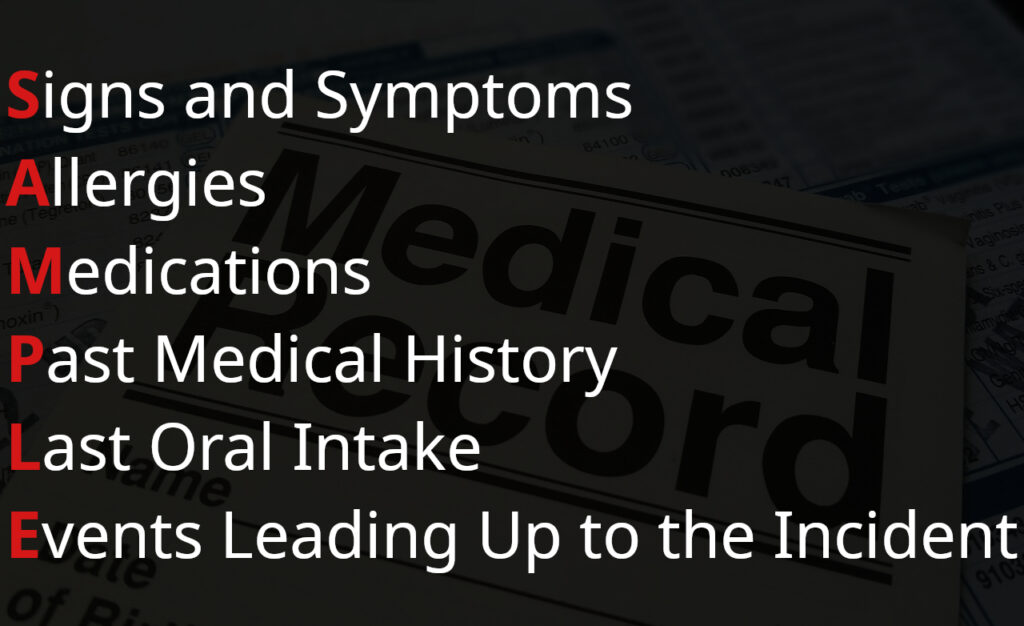
When it comes to emergency medical care, every second counts. EMTs are trained to quickly assess the situation and gather essential information to make lifesaving decisions. One of the primary tools for this critical task is the SAMPLE history, a mnemonic that helps EMTs systematically collect vital patient information during the initial assessment. Understanding each component of SAMPLE is key to its effective application in the field.
- Signs/Symptoms: This step involves identifying the chief complaint and any visible or reported symptoms. EMTs must distinguish between objective signs that they can observe (like bleeding or unconsciousness) and subjective symptoms reported by the patient (like pain or dizziness). Accurate identification of signs and symptoms sets the stage for the entire assessment process.
- Allergies: Allergies can significantly impact how a patient responds to medication or environmental factors. EMTs must inquire about any known allergies, particularly to medications, foods, or environmental triggers. This information is crucial in avoiding allergic reactions, especially when administering emergency treatments.
- Medications: Understanding what medications a patient is currently taking can offer insights into their medical history and potential interactions with emergency treatments. EMTs should note all prescription, over-the-counter, and herbal medications the patient is using.
- Past Medical History: A patient’s past medical history can provide context for the current emergency. Chronic conditions, previous surgeries, or ongoing treatments can influence the nature of the emergency and the appropriate response.
- Last Oral Intake: Knowing when a patient last ate or drank is important, especially in cases of unconsciousness or gastrointestinal issues. It can also influence decisions about medication administration and other treatments.
- Events Leading Up to the Present Illness/Injury: The circumstances surrounding the onset of the patient’s current condition can offer valuable clues about the nature of the emergency. EMTs should gather information about what the patient was doing when their symptoms began and any events or activities that might have contributed to their condition.
In the hands of a skilled EMT, the SAMPLE history is a powerful tool for rapidly assessing a patient’s condition and determining the most appropriate course of action. By methodically working through each element of SAMPLE, EMTs can gather comprehensive information that is vital for effective patient care.
Understanding the OPQRST Method

For emergency medical technicians, accurately assessing a patient’s pain is a critical component of the initial evaluation process. The OPQRST method offers a structured approach to pain assessment, enabling EMTs to gain vital insights into the patient’s condition. This method is not only about assessing pain but also about understanding the story behind it, which can often lead to more accurate diagnoses and effective treatment plans.
- Onset: This refers to when the pain started. EMTs need to know whether the pain was sudden or gradual, as this can indicate different types of medical issues. For example, sudden pain might suggest an acute condition like a heart attack, while gradual pain might be more indicative of a chronic issue.
- Provocation/Palliation: What makes the pain better or worse? Understanding the factors that exacerbate or alleviate pain can provide clues about its cause. For example, chest pain that worsens with deep breaths can point towards a respiratory issue.
- Quality: Describing the pain is crucial. Is it sharp, dull, stabbing, or burning? Each descriptor can lead to different paths in diagnosis. For instance, a ‘stabbing’ pain might suggest a puncture, whereas a ‘burning’ sensation might be associated with a nerve injury.
- Region/Radiation: Identifying where the pain is and whether it radiates to other parts of the body can help narrow down potential causes. For instance, pain that starts in the chest and radiates to the left arm is often associated with cardiac issues.
- Severity: Assessing the intensity of pain on a scale (usually from 1 to 10) helps determine the urgency and potential severity of the condition. High-intensity pain requires more immediate attention.
- Time: Understanding the duration and pattern of pain (constant or intermittent) is important. Chronic pain might have a different treatment approach compared to acute, episodic pain.
In emergency medical care, the OPQRST method is not just a tool; it’s a crucial part of the patient assessment process that guides EMTs in making informed decisions about patient care. It underscores the importance of a thorough, empathetic approach to patient interaction, ensuring that every aspect of the patient’s pain experience is understood and addressed.
Real-World Applications and Case Studies
EMTs frequently encounter a wide range of medical emergencies, each presenting unique challenges and requiring quick, informed decision-making. The application of SAMPLE history and OPQRST pain assessment techniques plays a pivotal role in these situations. By exploring real-world case studies, we can better understand the practical applications of these methods and their impact on patient outcomes.
- Car Accident Scenario: In the chaotic aftermath of a car accident, an EMT must rapidly assess multiple victims. Using the SAMPLE history, the EMT quickly identifies a patient with a history of diabetes and a recent head injury, crucial information for immediate treatment decisions. The OPQRST assessment reveals that another victim is experiencing sharp, radiating chest pain, indicating a possible cardiac issue.
- Sports Injury on Field: When an athlete collapses on the field, the SAMPLE history reveals no significant past medical history or allergies, but the OPQRST method helps determine that the sudden, severe abdominal pain started after a forceful tackle, suggesting possible internal injuries.
- Workplace Incident: In a workplace accident, SAMPLE history provides insights into a worker’s recent chemical exposure and existing respiratory condition, while OPQRST assessment indicates a gradual onset of difficulty breathing, guiding the EMT to suspect an asthma attack exacerbated by the exposure.
- Home Emergency: Responding to a call from a residence, EMTs use SAMPLE to discover that a patient’s severe headache began after missing hypertension medication. The OPQRST method reveals that the pain is pulsating and has been worsening over several hours, leading to suspicion of a hypertensive crisis.
- Public Event: At a public event, a participant faints. SAMPLE history indicates a lack of food intake and history of fainting episodes. OPQRST assessment shows the pain is non-existent, suggesting a possible syncopal episode rather than a traumatic injury.
These case studies demonstrate the versatility and importance of the SAMPLE and OPQRST methods in various emergency scenarios. For EMTs, adapting these techniques to the specifics of each situation is key to providing optimal patient care and making crucial treatment decisions under pressure.
Best Practices and Common Pitfalls for EMTs
In emergency medical services, the difference between a successful and a less effective intervention often lies in the attention to detail and adherence to best practices. While the SAMPLE history and OPQRST assessment techniques are powerful, their efficacy depends on how well they are implemented. Let’s explore some best practices and common pitfalls associated with these methods.
- Best Practices:
- Thoroughness and Attention to Detail: Ensure every aspect of the SAMPLE and OPQRST is covered without rushing, even in high-pressure situations.
- Effective Communication: Use clear, simple language and active listening skills to understand the patient’s experience accurately.
- Empathy and Patient Comfort: Show empathy and make patients feel comfortable, which can lead to more accurate and detailed information sharing.
- Continuous Learning: Stay updated with the latest protocols and techniques, and regularly participate in training sessions.
- Common Pitfalls:
- Overlooking Key Information: In high-stress situations, it’s easy to miss critical details. Always double-check the information gathered.
- Assuming Rather Than Assessing: Avoid jumping to conclusions based on initial impressions. Fully utilize SAMPLE and OPQRST to gather comprehensive data.
- Communication Barriers: Miscommunication can lead to inaccurate assessments. Be aware of language barriers, cultural differences, and patients’ ability to understand and respond.
- Documentation Errors: Inaccurate or incomplete documentation can affect patient care continuity. Ensure all findings are accurately recorded.
By adhering to these best practices and avoiding common pitfalls, EMTs can significantly enhance the quality of patient care they provide. It’s not just about following a procedure; it’s about integrating these methods into a holistic approach to patient assessment, ensuring that every patient receives the best possible care in emergency situations.
Putting SAMPLE and OPQRST Together
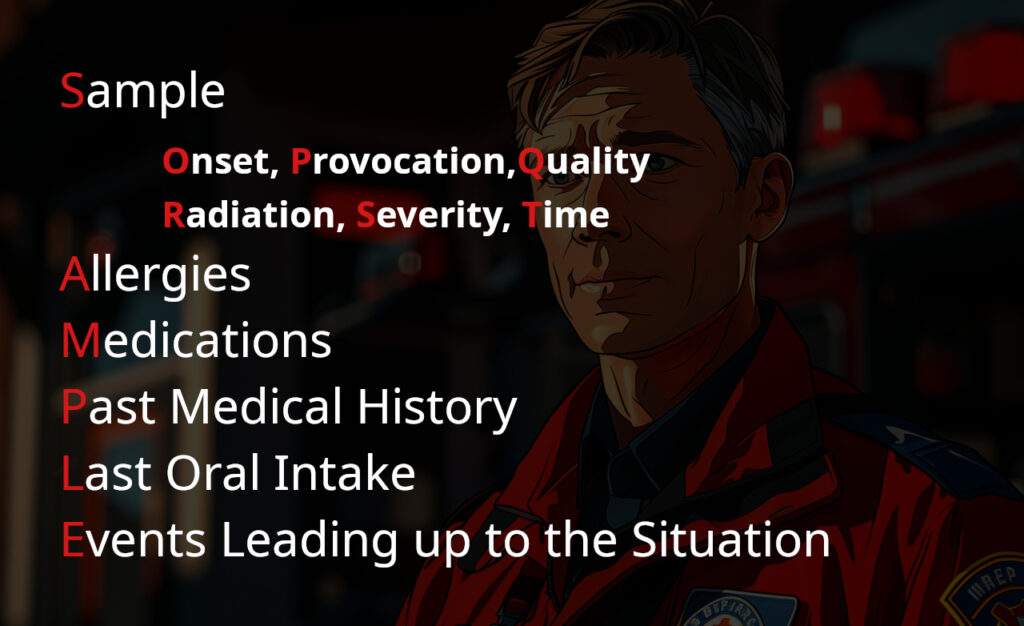
SAMPLE history and OPQRST are designed to be used together. How I teach my EMT students to utilize both is relatively simple. Think of the mnemonics as part of the same package.
When taking your sample history, start with the S. Part of notating the patient’s signs and symptoms is OPQRST. Onset, provocation, quality, radiation, severity, and time are all signs and symptoms of a medical issue.
After obtaining your OPQRST follow along with the rest of the AMPLE history. This is how I remember it in the field:
S(OPQRST).A.M.P.L.E.
Hopefully this little hint will help you remember these techniques come test day or out in the field.
Enhancing EMT Practice through SAMPLE and OPQRST
In the realm of emergency medical services, the capacity to swiftly and accurately assess a patient’s condition is invaluable. The SAMPLE history and OPQRST pain assessment methods stand as cornerstones in this process, offering structured, comprehensive frameworks for EMTs to gather critical information. As we’ve explored in this article, these methodologies are more than just acronyms; they are essential tools that, when used effectively, can significantly improve patient outcomes.
The real-world applications of SAMPLE and OPQRST, as demonstrated through various case studies, highlight their practicality and effectiveness in diverse emergency scenarios. From roadside accidents to public event emergencies, these methods provide EMTs with the insights necessary to make informed decisions under pressure. Furthermore, understanding the best practices and common pitfalls associated with these techniques is crucial for EMTs to continually refine their skills and enhance the quality of care provided.
The mastery of SAMPLE history and OPQRST pain assessment is a testament to the dedication and proficiency of EMTs in their relentless pursuit of excellence in patient care. As frontline responders, their role is not only critical but also heroic, and these tools serve to augment their ability to save lives and provide comfort in moments of crisis. For aspiring and veteran EMTs alike, the continuous honing of these skills is an ongoing journey towards achieving the highest standards in emergency medical services.
References
Related Posts
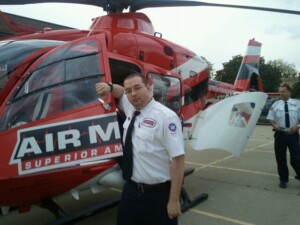
Michael
Hey there! It's so great to meet you! My name is Mike, and I am thrilled to be able to share my extensive EMS experience with you. I am currently working as an EMT in Tucson and am also an EMT instructor at Pima Community College. I am passionate about teaching future first responders, and I created this site specifically to assist anyone interested in pursuing a career in EMS.
It's possible that you are here because you're considering becoming an EMT, or maybe you are already one. Throughout my career, I have tested out countless pieces of EMT-related gear and equipment, and I want to help guide you in making smart decisions when it comes to selecting the best gear for your needs.
I am here to offer my support, so feel free to reach out if there is anything you need. Let's work together to make sure you have the tools you need to excel in this rewarding field!
Share this:
- Click to share on Facebook (Opens in new window)
- Click to share on LinkedIn (Opens in new window)
- Click to share on X (Opens in new window)
- Click to share on Reddit (Opens in new window)
- Click to share on Pinterest (Opens in new window)
- Click to share on Pocket (Opens in new window)
- Click to share on Telegram (Opens in new window)
- Click to share on Mastodon (Opens in new window)
- Click to print (Opens in new window)
- Click to email a link to a friend (Opens in new window)

